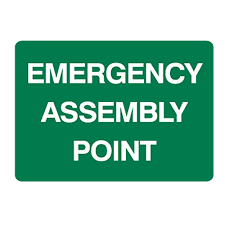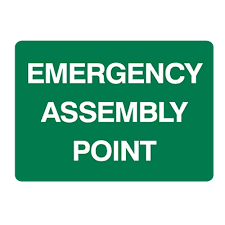Title Page
-
Site conducted
-
Organisation
-
Date the Plan was last reviewed
-
Version Number of Plan (if available)
-
Hard copy or Online version of Plan audited
-
Prepared by
-
Audit of Plan conducted on
The Emergency Response Management Plan (ERMP) includes:
-
Index, page numbers and definitions.
-
Building Address and diagrams/maps
-
Building Approval Documents
-
Reference to relevant Australian Standards and legislation/regulations
-
Emergency Planning Committee details
-
Emergency Control Organisation details
-
Fire Warden details
-
Means of alerting Emergency Services
-
Evacuation Maps showing the location of all Designated Assembly Areas
-
Evacuation procedures
-
Lockdown procedures
-
Bomb Threat Procedures
-
Other Emergency procedures
-
Location of First Aid Facilities and Defribillators
-
Types of Fire Fighting Equipment available
-
Fire Fighting Equipment -brief instructions
-
Communication methods and details of emergency warning alarms.
-
Staff Training requirements
-
Staff Training Records
-
Area Warden responsibilities
-
Personal Emergency Evacuation Plan template - For students/staff who may need specialised assistance.
Details of the Emergency Response Management Plan
-
Evacuation Maps in the ERMP have been updated to include any new buildings/areas or major renovations?
-
Is the Plan kept in a readily available location and is accessible to Emergency Services on demand.
-
Is the Plan available online for all staff to access?
-
Has a Fire Safety Advisor been appointed?
-
Do they have a current safety qualification?
-
Are all staff mentioned in the ERMP currently still employed at the organisation?
-
Are details of Fire Wardens widely communicated?
-
Have all Fire Wardens been trained in the last 12 months?
-
Have Evacuation Instructions and how to use Fire Equipment instructions been provided to all staff with last 24 months?
-
Have First Response evacuation instructions been provided to all new staff within 2 days of commencing?
-
Do the evacuation maps/diagrams contain the required information?
-
Are the evacuation maps/diagrams securely fastened and orientated for the building?
-
Has at least ONE emergency evacuation drill been carried out in the past 12 months?
-
Are records of emergency evacuation drills maintained and copies kept in the ERMP?
Means of Escape
-
Are evacuation routes clear of obstructions?
-
Are final exits clear of obstructions for 2 meters?
-
Are the final exits of any adjoining exits clear?
-
Are doors along the evacuation route unlocked?
-
Are self-closing doors working satisfactory?
-
Are all exit signs in good condition and undamaged?
Fire Extinguishers
-
Are the fire extinguishers provided appropriate for the potential emergencies identified?
-
Are the fire extinguishers correctly maintained?
-
Are inspection records available?
-
Are extinguisher locations identifiable?
-
Are the extinguisher locations unobstructed?
Fire Detection Systems
-
Are systems tested and maintained to Australian Standards?
-
Has a testing contractor notified the business of any problems and completed the maintenance logbook?
Fire Sprinkler Systems
-
Are Systems tested and maintained to Australian Standards?
-
Has a testing contractor notified the business of any problems and completed a maintenance logbook?
Occupiers Statement
-
The ERMP folder includes a copy of the latest signed Occupiers Statement.
-
The Occupiers Statement states that the prescribed fire safety installations meet the nominated Australian Standards.
-
The latest Occupiers Statement does NOT contain mention of any critical defect notices during the period.
-
The latest Occupiers Statement has been emailed to occupierstatement@emergency.qld.gov.au
Recommendations
-
LIST RECOMMENDATIONS FOR IMPROVEMENT:










